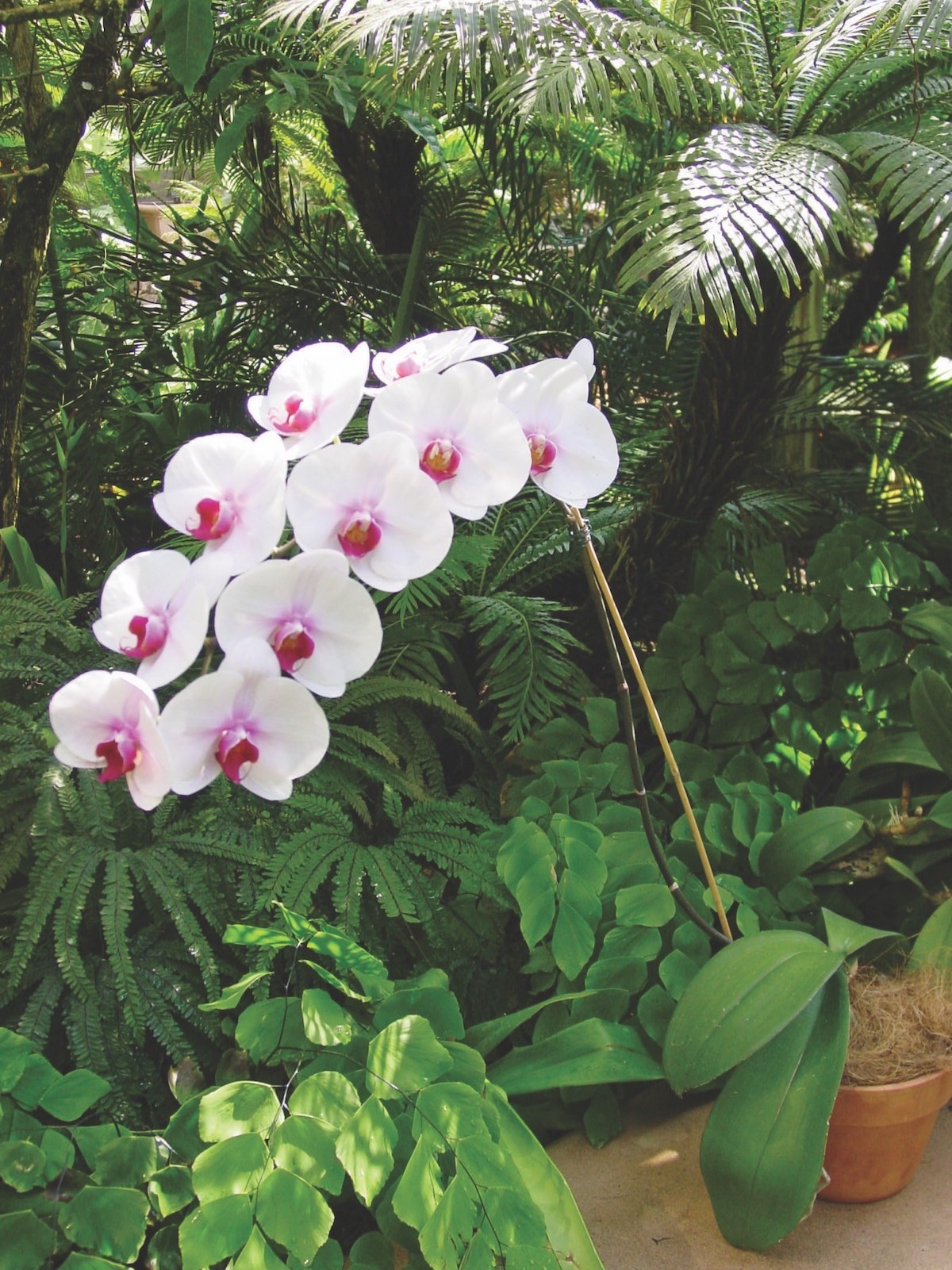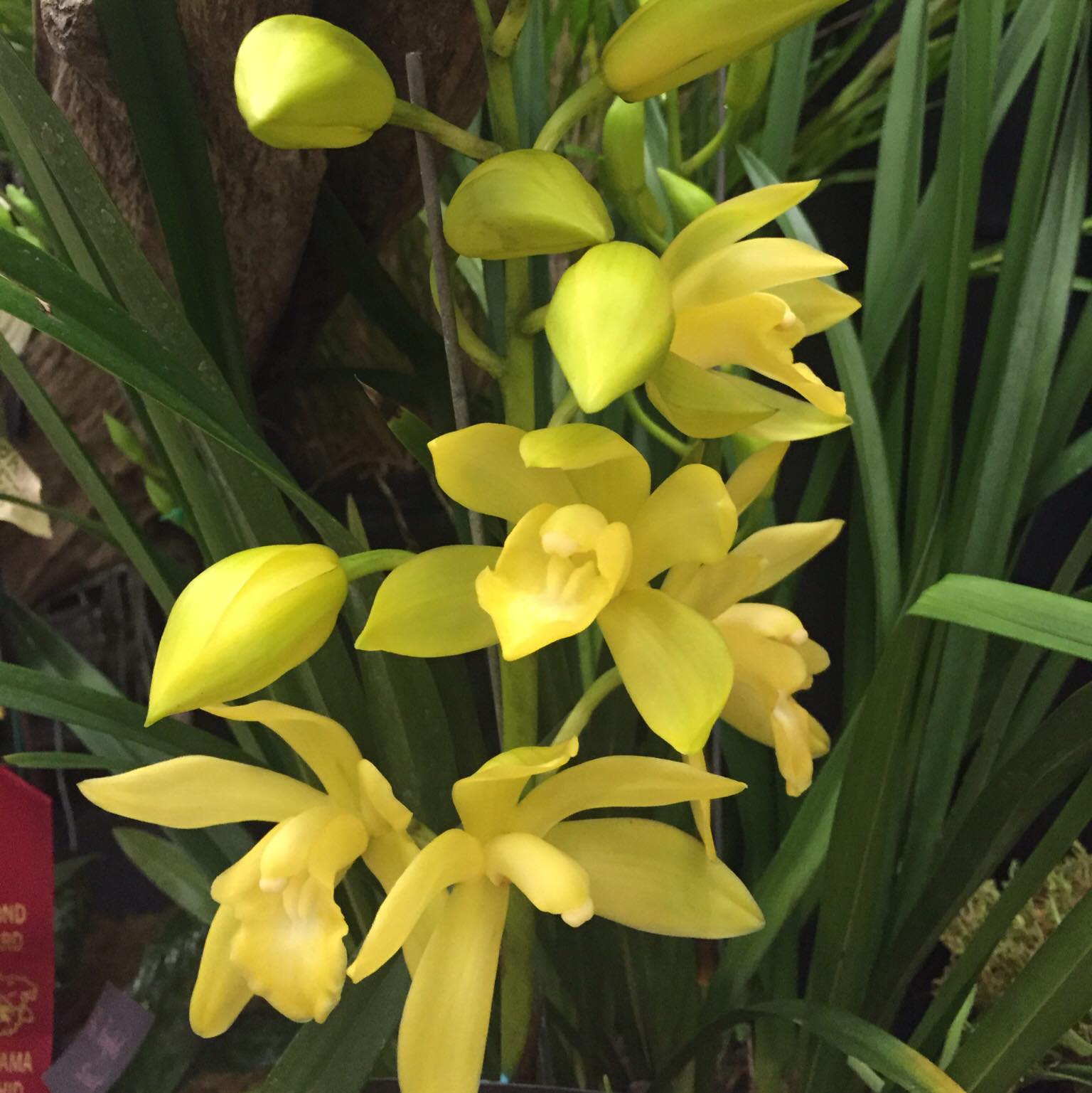It’s irresistible, that beautiful orchid in the store—lush and colorful with blooms nodding on long, arching stems. Wouldn’t it look gorgeous in your home? Or you receive and orchid as a gift, and its long-lived blossoms promise weeks of pleasure. How do you know if it’s a good match for your plant-tending skills? Orchids grow on every continent except Antarctica, and they’re even found growing above the Arctic Circle. In a plant family with so many homes, it shouldn’t be too much trouble to find at least one variety that will grow in your home. Becky Brinkman, the Fuqua Orchid Center Manager for the Atlanta Botanical Garden, says growing orchids should come easily for those accustomed to handling cut flowers.
“People who arrange flowers tend to be good observers and they’ve developed a sensitivity to visual clues. That’s the most important factor in growing orchids, or any plant really,” says Becky. She suggests the key to success is starting off with a healthy, well-grown plant.
In This Article
Healthy Orchid Roots | Types of Orchids | How to Make An Orchid Bloom | Daily Care of Orchids

Photo by Jason Wallis
RECOGNIZING HEALTHY ORCHID ROOTS
“The root system is the most important part of a healthy plant,” Becky says. “An orchid plant can lose a lot of root mass while sitting around waiting for a purchaser, and still look pretty good,” she cautions. “If you don’t want to unpot the plant right there in the shop, how can you tell if it is well rooted? Just wiggle it,” she explains. “Take the base of the plant between your thumb and forefinger, and give it a tweak. Does it feel loose in the pot? If so, put it back down and select another plant.”
The condition of the leaves is also important. “It’s not uncommon to see older leaves turning yellow, especially if the plant has been flowering,” says Becky. “But you don’t want shriveled leaves. That’s a sign you’ve lost a lot of root mass through over-watering; then the plant can’t take up water and the leaves start to shrivel.”
TYPES OF ORCHIDS
Just a sampling of the extraordinary variety of flowers in the orchid family
Click images to enlarge
HOW TO MAKE AN ORCHID BLOOM
To encourage your orchid to bloom, Becky has a couple of suggestions.
“First, check out the soil mix and repot if necessary. Mass-produced orchids are often grown in a peat moss–based mix. That’s great for orchid growers; they can produce plants quickly and cheaply. But it doesn’t work well for home growers,” she says. “Once your orchid has finished blooming, you can increase your chances of future success if you repot it in an all-purpose orchid mix based on fir bark. Not pine bark—that would kill it.” Becky warns. “You can buy good orchid mixes at most garden centers, by the scoop or by the bag.
“As with most flora, light is the key factor in reblooming your orchids,” she adds. “Give your orchid the light it needs to thrive and you’re more likely to get new blooms.”

Photo by Sukpaiboonwat
Individual pots of Paphiopedilum orchids grouped in a large bowl makes a showy display of flowers that can last a month or more.
MODERATE-LIGHT AND LOW-LIGHT ORCHIDS
These usually do well by a north-facing window. If you hold your hand over the plant and it doesn’t cast a shadow, you’ve got low light. The classic orchid for this setting is the phalaenopsis or moth orchid. Paphiopedilums, or slipper orchids, and Miltoniopsis, the pansy orchid, grow well in north or east windows.
MEDIUM-LIGHT AND HIGH-LIGHT ORCHIDS
This intensity of light is usually found in south- or west-facing windows. Dendrobriums, the dancing ladies, and oncidiums are good here. Cattleyas, the corsage orchid, will also do well with a couple of hours of direct sun through a window.
DAILY CARE OF ORCHIDS
Finally, there is the daily care of your plant. In this case, watering calls for restraint. “Most tropical orchids are epiphytic, and the quickest way to kill them is too much water,” Becky reminds us. In other words, in their natural habitat, orchids live on the surface of plants (which is one definition of epiphytic) like tree trunks and branches, and their roots are not adapted for soil. They need a well-drained potting medium that will allow them to shed water the way they would if they were up in a tree.
“When I’m watering,” says Becky, “I look at the soil mix. The color changes when the plant is dry. If you’re watering your orchid once a day or every other day, you’re probably watering too much.” Orchids are also light feeders, so a general, all-purpose fertilizer, developed at one-quarter strength, every two weeks is plenty.
Growing orchids can become an addiction. For good information on orchid culture and sources, Becky recommends the American Orchid Society’s website. She also likes orchidspecies.com, “a great Internet orchid encyclopedia, where you can see the extraordinarily large and diverse family of orchids.”
By Conne Ward-Cameron



















